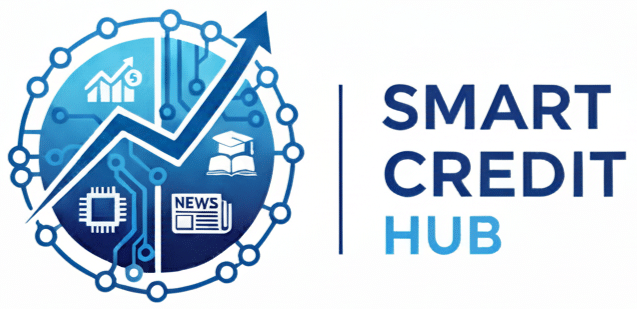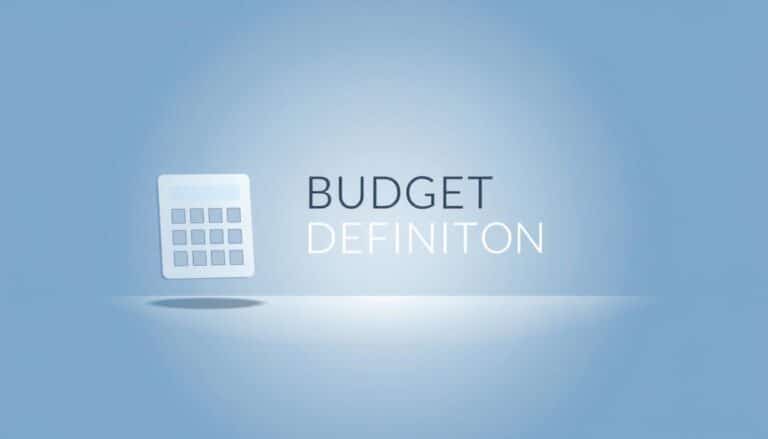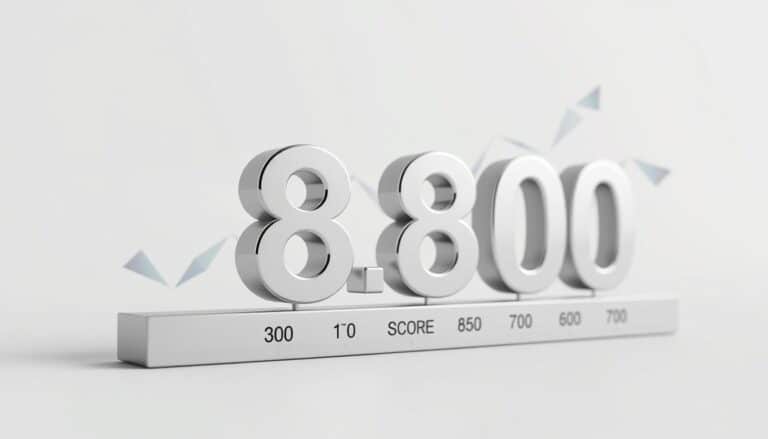Knowing the difference between good debt and bad debt is key to smart money choices. Not all debt is the same. Knowing this can really help your financial health.
Think about a mortgage that lets you own a home, or a student loan that helps your future. These are debts that can be good. But, using credit cards for things you don’t need can hurt your wallet.
Related content:
You will stay on the same website.
The important thing is to understand why you’re taking on debt. This way, you can make choices that help you reach your financial goals.
Key Takeaways
- Not all debt is the same; some can be beneficial.
- Understanding the purpose of debt is crucial.
- Debt like mortgages and student loans can be considered good.
- Avoid accumulating unnecessary debt.
- Make informed decisions to achieve financial stability.
Understanding Debt: An Overview
Debt is a complex topic that affects our financial health. It’s money borrowed with a promise to pay it back, often with extra charges.
Learning about debt management starts with knowing the basics. This includes what debt is and the different kinds out there.
Definition of Debt
Debt is a financial duty owed by one person to another. It comes from things like loans, credit card use, or mortgages.
Keeping a good debt-to-income ratio is key. This ratio compares your debt to your income. A lower ratio means you’re in better shape financially.
Types of Debt
Debt falls into several categories based on its purpose and nature. Here are a few:
- Secured Debt: This is backed by something valuable, like a house or car.
- Unsecured Debt: This doesn’t have collateral, like credit card debt or personal loans.
- Revolving Debt: You can borrow and repay money as needed, up to a limit, like with credit cards.
- Installment Debt: You borrow a set amount and pay it back in fixed amounts over time, like with car loans or mortgages.
Knowing about these debt types is vital for financial wellness. It helps you make smart borrowing choices and manage your debt better.
Managing debt well is essential for financial stability and reaching long-term goals. By understanding debt basics and its various forms, you can start working towards a better financial future.
What is Good Debt?
Good debt is a financial tool that can help you in the long run. It’s about making smart investments that grow in value or earn income over time.
Characteristics of Good Debt
Good debt stands out because of its low interest rates and tax perks. It also offers the chance for long-term financial gains. For example, a mortgage with a low rate is good debt. It lets homeowners invest in a property that might increase in value.
Key characteristics of good debt include:
- Low interest rates
- Tax benefits, like mortgage or student loan interest deductions
- Potential for long-term financial returns or value appreciation
Common Examples of Good Debt
Examples of good debt include student loans, mortgages, and business loans. These debts are investments in your future, like education, real estate, or a business.
For instance, a student loan for higher education is good debt. It can lead to higher earnings later on.
Benefits of Good Debt
Good debt offers many benefits. It allows you to build wealth with low-interest loans or investments. It also comes with tax perks that lower borrowing costs.
“Debt can be a powerful tool for building wealth, but it’s crucial to differentiate between good and bad debt.”
Understanding good debt helps you make better financial choices. It promotes responsible borrowing and wealth building.
What is Bad Debt?
It’s important to know what bad debt is to make smart money choices. Bad debt is money borrowed that doesn’t help your finances or future earnings.
Characteristics of Bad Debt
Bad debt often has high interest rates and doesn’t offer long-term financial benefits. It usually comes from buying things that lose value over time.
- High interest rates that make repayment difficult
- No potential for long-term financial gain
- Used for consumable or depreciating items
Common Examples of Bad Debt
Examples of bad debt include credit card balances for daily expenses, payday loans, and personal loans for non-essential items.
| Type of Debt | Characteristics | Examples |
|---|---|---|
| Credit Card Debt | High interest, revolving credit | Used for groceries, dining out |
| Payday Loans | Very high interest, short term | Emergency cash, unexpected expenses |
| Personal Loans | Variable interest, fixed term | Used for vacations, luxury items |
Consequences of Bad Debt
Accumulating bad debt can lead to serious problems like damaged credit scores, financial stress, and even bankruptcy. It’s key to manage your debt well to avoid these issues.
Effective debt management means knowing your debt and finding ways to pay it off. This can include consolidating debt, getting better interest rates, and making a budget that focuses on paying off debt.
- Create a budget that accounts for debt repayment
- Consider debt consolidation or balance transfer options
- Negotiate with creditors for better terms
By understanding and managing bad debt, you can improve your financial health and lower the chance of financial troubles.
The Importance of Debt Management
Understanding debt management is key to making smart financial choices. It helps achieve financial stability and lowers stress.
Debt management means using strategies to handle debt well. It’s about knowing your finances, including income, expenses, and debts.
Strategies for Managing Debt
There are many ways to manage debt. Here are a few:
- Make a budget that includes paying off debt.
- Pay off debts with high interest first.
- Combine debts into one, lower-interest loan or card.
- Talk to creditors to lower interest rates or settle debts.
Using these methods can help manage debt and reach financial stability.
Tools for Debt Management
There are also tools to help with debt management. These include:
- Debt consolidation programs
- Credit counseling services
- Debt management apps and software
Debt consolidation is a great tool. It simplifies paying off debt by combining it into one loan with a lower rate and one payment.
By using these tools and strategies, people can improve their financial knowledge. This helps them make better debt management decisions.
How to Differentiate Between Good and Bad Debt
To manage debt well, it’s key to tell good debt from bad. This isn’t always easy, but some signs can help.
Analyzing Interest Rates
Interest rates are a big clue. Good debt usually has lower interest rates. This makes it easier to handle over time. For example, mortgages and student loans often have lower rates than credit card debt.
Here’s a look at typical interest rates for different debts:
| Type of Debt | Typical Interest Rate |
|---|---|
| Mortgage | 3-5% |
| Student Loan | 4-6% |
| Credit Card | 15-25% |
| Personal Loan | 6-12% |
Evaluating Purpose and Return
Looking at the debt’s purpose and return is also important. Good debt is for investments that grow or increase in value, like education or real estate. Bad debt is for things that lose value or are just for fun.
For instance, a student loan for education can be good debt if it leads to a better job and more money. A mortgage can also be good if the house’s value goes up over time.
The Role of Credit Scores in Debt Decisions
Credit scores play a big role in getting debt at good terms. A high score can lead to better financial chances. But, a low score can block access to credit and raise interest rates.
Knowing how credit scores work is key to handling debt well. Credit utilization is a big part of this, showing how much credit you use.
How Credit Scores Are Calculated
Credit scores depend on several things. These include payment history, credit use, how long you’ve had credit, credit mix, and new credit checks. Payment history is a big part, showing the need for on-time payments.
Having a good credit mix and keeping credit use under 30% can help your score. Also, avoiding too many new credit checks keeps your score steady.
Impact of Debt on Credit Scores
Debt can really affect your credit scores, if not managed right. High debt levels, compared to credit limits, can lower scores.
Managing debt, like consolidating or paying off high-interest loans, can boost scores. It’s also important to check your credit reports for mistakes and correct them.
By understanding credit scores and keeping your credit healthy, you can improve your financial wellness. This leads to better debt choices.
The Long-Term Effects of Good Debt
Good debt is more than just a financial burden. It’s a way to build wealth and achieve financial stability. When used wisely, it can bring more benefits than costs.
Building Wealth Over Time
Good debt often means investing in things that grow in value or earn money. For example, a mortgage can be good debt. It lets you own a valuable asset that usually increases in value.
- Mortgages for purchasing homes, which can appreciate in value.
- Student loans that finance education, potentially leading to higher-paying jobs.
- Business loans that fund ventures with growth potential.
These debts are called “good” because they can increase your wealth or income.
Enhancing Financial Stability
Good debt also helps make your finances more stable. This happens through smart planning and managing your debt.
For instance, a well-managed mortgage can lower your taxes with mortgage interest deductions. Student loans for education can lead to better jobs and higher salaries, improving your financial stability.
Key strategies for enhancing financial stability through good debt include:
- Carefully evaluating the return on investment (ROI) for any debt-financed investment.
- Maintaining a good credit score to secure favorable interest rates.
- Developing a comprehensive financial plan that accounts for debt repayment and savings.
By using these strategies, you can make the most of good debt for long-term financial stability.
The Dangers of Bad Debt
Bad debt can harm your finances and mental health. It creates a cycle that’s hard to get out of. It’s important to know how it works and find ways to manage it.
The Cycle of Debt
Bad debt starts when you take on debt you can’t pay back. As interest builds up, the debt grows. This makes it harder to pay off the original amount.
- High-interest rates on credit cards and loans can make things worse.
- Not budgeting or planning can lead to overspending and more debt.
- Unexpected expenses can push you further into debt.
To break this cycle, you need strategies like consolidating debt and negotiating lower rates. Also, making a budget that focuses on paying off debt is key.
Psychological Impact of Bad Debt
The mental effects of bad debt are real. It can cause anxiety, depression, and other mental health problems. The stress of debt can also harm relationships and overall happiness.
Some common psychological effects include:
- Stress and Anxiety: Debt can make daily life stressful and harm your health.
- Depression: Long-term debt can make you feel hopeless and depressed.
- Strained Relationships: Money problems can lead to fights with family and friends.
Dealing with bad debt needs both financial plans and support for your mental health.

In summary, bad debt is a big risk for your money and mind. Knowing how debt works and its effects on your mind is key to managing it. By facing these dangers and taking action, you can improve your financial health.
The Impact of Interest Rates
Interest rates have a big impact on debt. They affect how much you pay back and how long it takes. Knowing about interest rates is key to managing your debt well.
Fixed vs. Variable Rates
Interest rates can be fixed or variable. A fixed interest rate stays the same, making payments predictable. But, a variable interest rate can change with the market, affecting your total loan cost.
Choosing between fixed and variable rates depends on your financial situation and market trends. For example, a low-interest rate might make a variable rate better. But, if rates are going up, a fixed rate could save you money over time.
How Interest Rates Affect Debt Types
Different debts are affected by interest rates in different ways. For example:
- Mortgages: Usually have lower rates, making them cheaper for big purchases like homes.
- Credit Cards: Often have higher, variable rates. This can quickly increase your debt if not paid quickly.
- Student Loans: May have fixed rates. Some government loans even have lower rates, helping students.
It’s important to understand how interest rates affect different debts. This helps you make better financial choices.
In conclusion, interest rates are crucial for managing debt. By knowing the differences between fixed and variable rates and their effects on various debts, you can make smarter financial decisions.
The Role of Loans in Good Debt
Good debt often involves loans that can make your financial situation better over time. Loans can be very useful when used right. They help people invest in their future. This is true for education and housing.
Student Loans and Education Investment
Student loans are a key example of good debt. They let people pay for their education. This can lead to better jobs and higher pay later on. Here are some important points about student loans:
- They make education affordable that might be too expensive without them.
- Many student loans have good terms, like not having to pay back until after you graduate.
- Investing in education can open up better job opportunities and higher salaries.
Home Mortgages and Property Value
Home mortgages are also good debt. They let people buy homes without paying the full price upfront. Important things about home mortgages include:
- They help people become homeowners without needing to pay the full price at once.
- Mortgage interest rates are often low, which is good for those with good credit.
- Home values usually go up over time, making owning a home a valuable investment.
In conclusion, loans like student loans and home mortgages are crucial for good debt. They offer chances to invest in education and housing. This can lead to more financial stability and wealth over time.
Credit Cards: A Double-Edged Sword
Credit cards can be good or bad, depending on how you use them. They offer convenience and rewards, but can also lead to debt if not managed well.
Responsible Use of Credit Cards
To get the most out of credit cards, use them wisely. Know the rules, track your spending, and pay on time. Responsible borrowing means not going over your limit and paying off the full balance each month to avoid interest.
Keeping your credit utilization under 30% is important. For example, if your limit is $1,000, try to keep your balance under $300. Checking your credit report often helps keep your credit in good shape.
The Dangers of Credit Card Debt
Credit cards can cause financial problems if not handled right. High-interest rates and fees can add up fast, making it hard to pay off debt. The ease of using them can lead to overspending, making it seem like you’re not spending money.
To stay out of debt, be careful and plan ahead. Make a budget, avoid buying things you don’t need, and pay more than the minimum when you can. Knowing your credit card agreement and watching your spending are crucial for using credit cards wisely.
Debt Consolidation: A Possible Solution
Managing many debts can be tough. Debt consolidation makes it easier. It combines different debts into one loan. This can lower stress and make monthly payments simpler.
What is Debt Consolidation?
Debt consolidation is a way to merge several debts into one. This often means a lower interest rate and one monthly payment. It can include credit card debt, personal loans, and more.
Key characteristics of debt consolidation include:
- Combining multiple debts into a single loan
- Potentially lower interest rates
- A single monthly payment
Pros and Cons of Debt Consolidation
Debt consolidation has good and bad sides. Knowing these can help you decide what’s best for you.
Pros:
- Simplified finances: It makes managing payments easier.
- Lower monthly payments: You might pay less each month.
- Reduced stress: It can make you feel less stressed about money.
Cons:
- Potential for higher total cost: You might pay more interest over time.
- Risk of accumulating new debt: You could still get into debt if you don’t change your spending.
- Impact on credit score: Getting a consolidation loan might lower your credit score at first.
Debt consolidation can help manage debt. But, it’s important to think about the good and bad sides. This way, you can make choices that help your financial health in the long run.
The Importance of Financial Education
Learning about money is key to handling debt well. Financial literacy helps people make smart choices about borrowing, saving, and investing. It teaches them how to deal with debt’s complexities.
Resources for Learning About Debt
Many resources are out there for those wanting to learn about money. These include:
- Online courses and webinars on personal finance and debt management.
- Books and e-books on financial literacy, found at libraries or online.
- Financial counseling from non-profit groups.
- Websites and blogs on personal finance and education.
Using these resources can help people understand money better. They can learn how to manage debt well.
Benefits of Being Financially Savvy
Being smart with money has many advantages, such as:
- Improved financial stability: Making smart money choices can make your finances more stable.
- Reduced debt: Knowing how to handle debt can help you pay off what you owe faster.
- Increased savings: Financially literate people are better at saving for the future.
- Better investment decisions: Understanding money can lead to smarter investment choices, which might bring in more money.
By focusing on financial education, people can take charge of their money. They can make choices that help their finances in the long run.
Common Misconceptions About Debt
Debt is often misunderstood. Many see it as only bad, but it’s more complex. There’s a difference between good and bad debt.
Myths vs. Facts
Some think all debt is bad. But, not all debt is the same. For example, a mortgage can be good debt. It lets you build equity over time.
But, using credit cards for things you don’t need is bad debt. It has high interest rates and can get out of control fast.
Understanding Financial Terminology
It’s key to know financial terms to deal with debt. For instance, APR (Annual Percentage Rate) is the yearly interest rate on loans or credit cards, including fees.
Another important term is credit score. It shows how good you are at managing credit based on your history.
| Term | Definition | Example |
|---|---|---|
| APR | Annual Percentage Rate | Credit card APR: 18% |
| Credit Score | Numerical representation of creditworthiness | Excellent credit score: 750+ |
| Debt Consolidation | Combining multiple debts into one loan | Consolidating credit card debt into a personal loan |
Knowing these terms and the difference between good and bad debt helps you make better financial choices.
Expert Opinions on Good Debt vs. Bad Debt
Dealing with debt can be tricky. Financial experts help us know the difference between good and bad debt. They guide us in making smart choices for our money.
Financial Advisors’ Perspectives
Financial advisors say it’s key to know why and how you borrow money. John Smith, a certified financial planner, notes, “Good debt is usually for things that grow in value or make money over time, like real estate or education.”
Good debt has low interest rates and tax perks. For example, mortgages and student loans are good because they offer long-term gains.
| Debt Type | Interest Rate | Tax Benefits |
|---|---|---|
| Mortgage | 3.5% | Mortgage interest deduction |
| Student Loan | 4.5% | Student loan interest deduction |
| Credit Card | 18% | No tax benefits |
Real-Life Case Studies
Real-life stories show how expert advice works in practice. A couple got a mortgage for a home. They could deduct the interest on their taxes, lowering their income to tax.
“We were able to invest in a home that appreciated in value over time, providing us with a significant return on investment,” said the couple.
This story shows the perks of good debt. It can help you build wealth and earn a profit.
Knowing the difference between good and bad debt helps us make better financial choices. This way, we can improve our financial health.
Conclusion: Making Informed Debt Decisions
Knowing the difference between good and bad debt is key to financial health. By making smart debt choices, people can grow their wealth. This way, they avoid the dangers of financial trouble.
Emerging Trends in Debt Management
Debt management is changing fast, thanks to new tech. Soon, we’ll use digital tools more for managing debt and learning about money. This will help us make better choices and avoid financial problems.
Maintaining Financial Health
Keeping your finances in check means staying up-to-date on debt management. It’s important to regularly check your financial health. This way, you can handle debt well and reach your money goals. As money matters change, keeping current with new trends is crucial for financial security.



